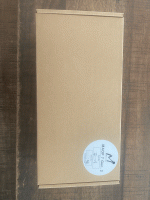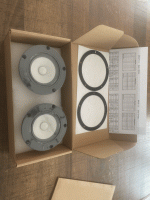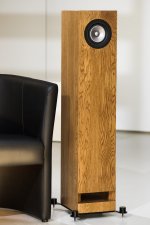When designing a sealed enclosure I understand that a properly sized box (volume) influences frequency response of the speaker. Are there other aspects of the design that can influence how it sounds? Do taller boxes have a taller sound stage? Does baffle width matter? Square edges vs rounded? Symmetrically placed speaker in the baffle vs maybe something like a golden ratio?
Thinking about an moap 7 build that will be crossed over in the 150-250hz range to a sub that can handle that and I’m curious if there’s any conventional wisdom regarding the shape of it. Thanks in advance.
Thinking about an moap 7 build that will be crossed over in the 150-250hz range to a sub that can handle that and I’m curious if there’s any conventional wisdom regarding the shape of it. Thanks in advance.
Maybe an interesting read for anyone that stumbles into this thread looking for an answer. Still super interested in personal experiences.
https://audiojudgement.com/speaker-baffle-design-and-diffraction/
https://audiojudgement.com/speaker-baffle-design-and-diffraction/
Once you are past a certain point the size of a sealed box can vary widely. I typically like to keep Q between 0.58-0.707.
Like any other box the shape has an affect. Wide baffle pushes baffle step down in frequency, internal & outer shapes have their own diffraction affects. Too shallow or walls to close can cause time smear from early reflections. Taller sound… more to do with the height of the driver vrs your ears.
MAOP 7 is close to A7v2:

Looks like 150 will not be an issue. I have mine in a midTL and XO at 200Hz (on a wiidde baffle).
For the MAOP, the closer you can get to a nautilus midrange-like teardrop shape.
dave
Like any other box the shape has an affect. Wide baffle pushes baffle step down in frequency, internal & outer shapes have their own diffraction affects. Too shallow or walls to close can cause time smear from early reflections. Taller sound… more to do with the height of the driver vrs your ears.
MAOP 7 is close to A7v2:
Looks like 150 will not be an issue. I have mine in a midTL and XO at 200Hz (on a wiidde baffle).
For the MAOP, the closer you can get to a nautilus midrange-like teardrop shape.
dave
Last edited:
Are yours in a 14L box?Once you are past a certain point the size of a sealed box can vary widely. I typically like to keep Q between 0.58-0.707.
Like any other box the shape has an affect. Wide baffle pushes baffle step down in frequency, internal & outer shapes have their own diffraction affects. Too shallow or walls to close can cause time smear from early reflections. Taller sound… more to do with the height of the driver vrs your ears.
MAOP 7 is close to A7v2:
View attachment 1081794
Looks like 150 will not be an issue. I have mine in a midTL and XO at 200Hz (on a wiidde baffle).
For the MAOP, the closer you can get to a nutilus midrange-like teardrop shape.
dave
dave
I am not sure the volume, but on that order, it is a lossy aperiofic line. Long & skinny.
The top bit can be seen here. Closed on one side, open on the other. Open end sort of longer but skinner.
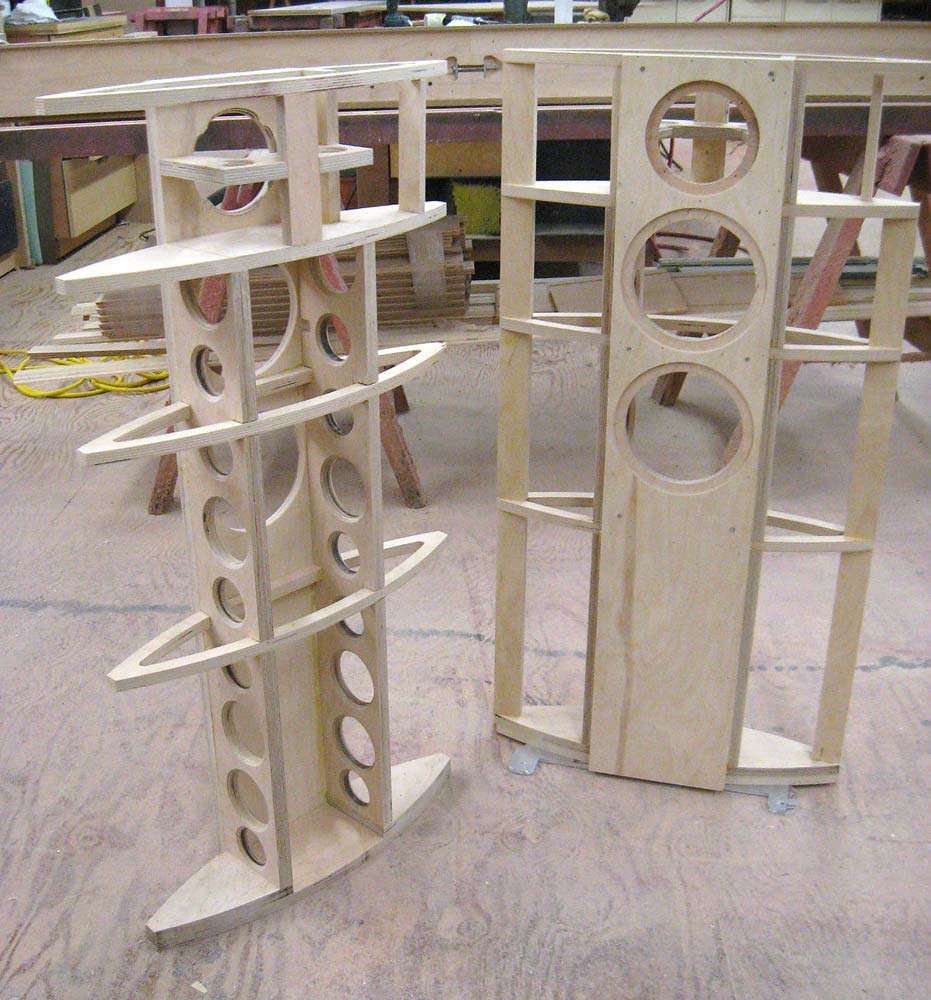
And what it looks like with the skin.
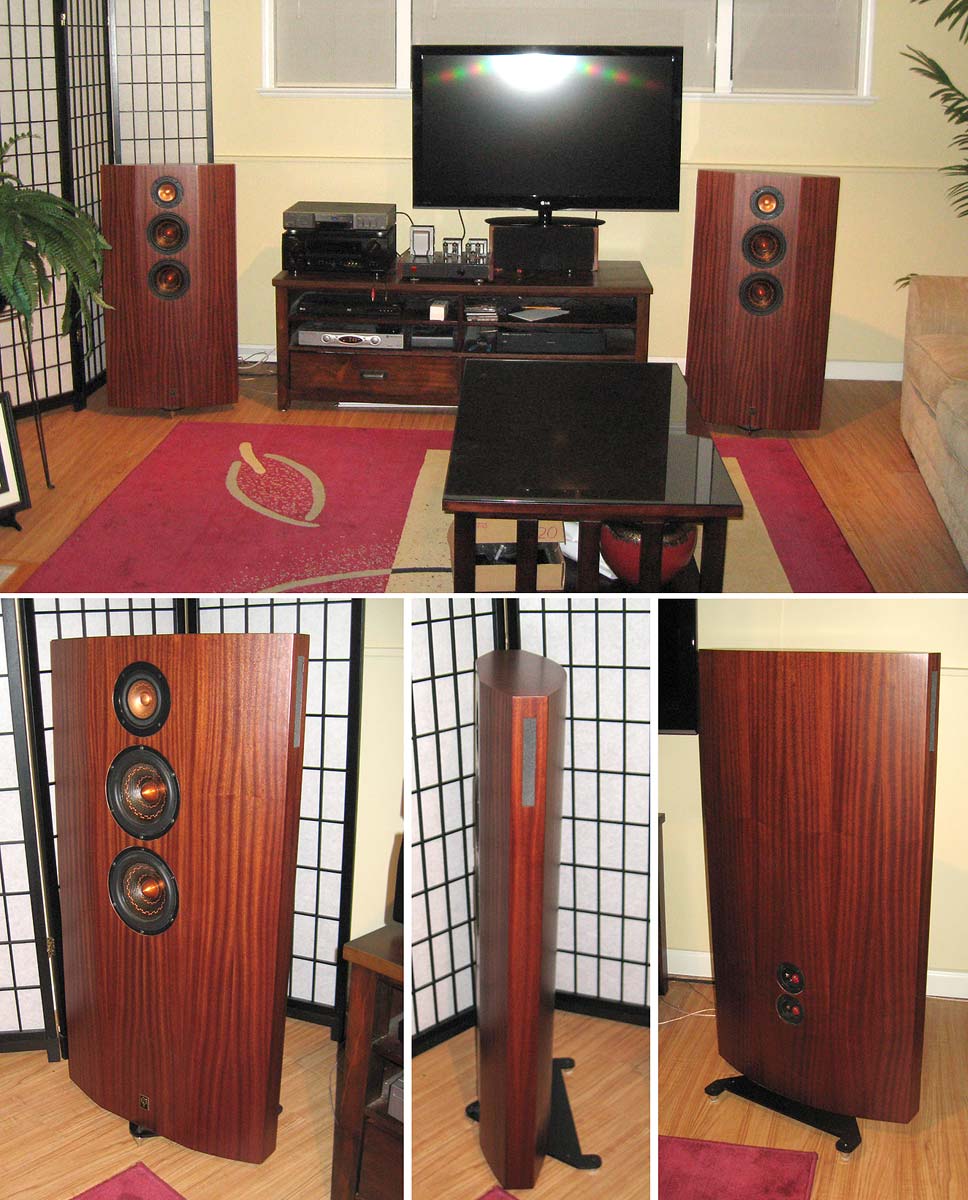
dave
The top bit can be seen here. Closed on one side, open on the other. Open end sort of longer but skinner.

And what it looks like with the skin.

dave
I enjoyed my pioneer b20 in a 2' wide x 3' tall x 1' deep sealed (close or below a .577), no stuffing, driver right up against the top.
I believe the lack of back pressure allowed the driver to track the signal better, versus fighting the springing force of a smaller sealed box.
I enjoyed it much better than in a sealed .707 12" tall x 18" wide box (double walled with sand) sitting on a pair of 15's crossed at 200hz.
Even through the b20, the active crossover added a huge layer of grit to my ears. Perhaps the string of cheap op-amps and electrolytics in the signal path had something to do with it.
If you care about it, drums and bass guitar (not and voice at the same time) sound better on a 1 way (at ultra low volumes) and a 2-way (6.5" crossed 2khz or even double 15's crossed at 700hz), compared to a 12" full range crossing 80-200hz, or most any 3-way. Voice/movies, I was ok crossing at 200hz 18db on a receiver as a 12" center channel (Fane 250tc under the tv) and it went extremely loud, as loud as an 80 watt onkyo would go. Music, meh.
I assume it is the phase wrap through the crossover point bothers me, or I don't like it on a direct comparison.
I bet a 6db gets around all those problems.
But back on topic, I like a wide baffle, wide as possible.
But that can make passive baffle step compensation pricey.
I believe the lack of back pressure allowed the driver to track the signal better, versus fighting the springing force of a smaller sealed box.
I enjoyed it much better than in a sealed .707 12" tall x 18" wide box (double walled with sand) sitting on a pair of 15's crossed at 200hz.
Even through the b20, the active crossover added a huge layer of grit to my ears. Perhaps the string of cheap op-amps and electrolytics in the signal path had something to do with it.
If you care about it, drums and bass guitar (not and voice at the same time) sound better on a 1 way (at ultra low volumes) and a 2-way (6.5" crossed 2khz or even double 15's crossed at 700hz), compared to a 12" full range crossing 80-200hz, or most any 3-way. Voice/movies, I was ok crossing at 200hz 18db on a receiver as a 12" center channel (Fane 250tc under the tv) and it went extremely loud, as loud as an 80 watt onkyo would go. Music, meh.
I assume it is the phase wrap through the crossover point bothers me, or I don't like it on a direct comparison.
I bet a 6db gets around all those problems.
But back on topic, I like a wide baffle, wide as possible.
But that can make passive baffle step compensation pricey.
Last edited:
Make it wide enough and there's no baffle step, though for a really low one it ideally needs some corner loading.
But the volumes are low, so into the fletcher munson curve we go.
Even my double 15's against the wall, I liked them better with a bit of boost below 200hz.
Even my double 15's against the wall, I liked them better with a bit of boost below 200hz.
Does your bracing touch the back of the Alpair driver? If so, is it bare wood or do you put some kind of gasket material over it? I've got some ideas cooking that could be fun. Also, earlier in the thread you mentioned that too shallow box can cause early reflection smearing. Given that your enclosure is quite shallow, was there something you did to mitigate that or does it fall into a choose your compromise scenario? Per your suggestion I'm looking into a teardrop shape of sorts and towards the back of the enclosure the walls will become increasingly closer together.I am not sure the volume, but on that order, it is a lossy aperiofic line. Long & skinny.
The top bit can be seen here. Closed on one side, open on the other. Open end sort of longer but skinner.
Yes, you are bracing the driver against more of the box so that its reactive energy is beening shared across panels and not just impacting the baffle.
The softest gasket we have used is a piece of veneer. Getting the depth of this part of the brace is tricky, enuff for solid contact, not so much you stress the driver. A lossy gasket would partially defeat the purpose.
The loudspeakers we have built that suffered from this, issue was fixed with a supreBaffle. 19mm additional spacing decidely improved things.
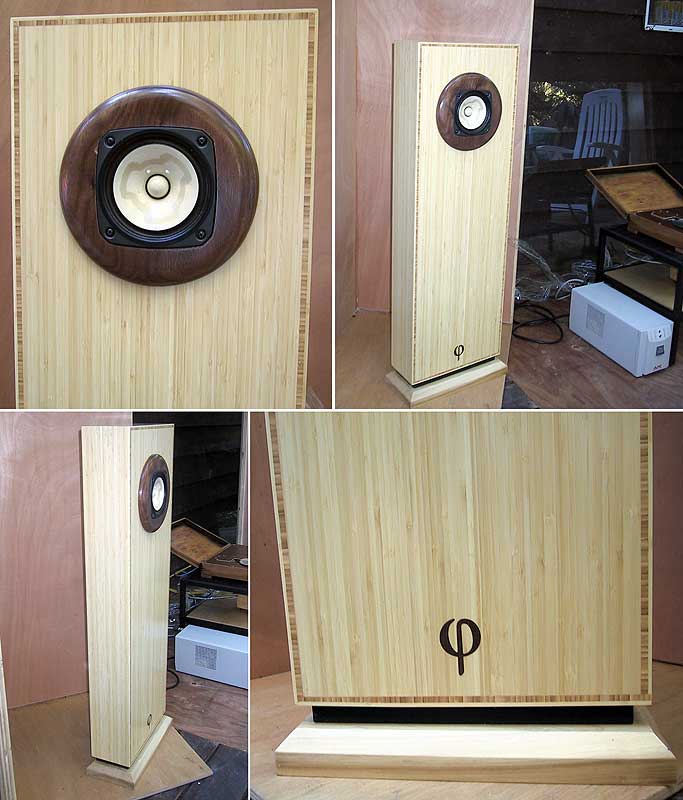
dave
The softest gasket we have used is a piece of veneer. Getting the depth of this part of the brace is tricky, enuff for solid contact, not so much you stress the driver. A lossy gasket would partially defeat the purpose.
The loudspeakers we have built that suffered from this, issue was fixed with a supreBaffle. 19mm additional spacing decidely improved things.

dave
is that paperwork freq response 10db per division ?
And the 7.2 is a squeek smaller than a 4" tang band ?
My w4-1337's had 57cm2.
I do say, I am a little impressed with the youtube 10.3 in a pencil
Could be room, a little screechy when she gets on it.
Currently, I've been scanning over the pearl acoustics sibelius.
https://hifiplus.com/articles/pearl-acoustics-sibelius-sg-loudspeaker/
https://pearlacoustics.com/
I love the comment from another at end of this short video
“What do you think ? Do you like the speakers ?”
“I’m not listening to the speakers. I’m listening to the music, it’s beautiful.”
picture below from the hifiplus review.
And the 7.2 is a squeek smaller than a 4" tang band ?
My w4-1337's had 57cm2.
I do say, I am a little impressed with the youtube 10.3 in a pencil
Currently, I've been scanning over the pearl acoustics sibelius.
https://hifiplus.com/articles/pearl-acoustics-sibelius-sg-loudspeaker/
https://pearlacoustics.com/
I love the comment from another at end of this short video
“I’m not listening to the speakers. I’m listening to the music, it’s beautiful.”
picture below from the hifiplus review.
Attachments
Specs call it 122.3mnis that paperwork freq response 10db per division ?
And the 7.2 is a squeek smaller than a 4" tang band ?
My w4-1337's had 57cm2.
I do say, I am a little impressed with the youtube 10.3 in a pencil
Could be room, a little screechy when she gets on it.
Currently, I've been scanning over the pearl acoustics sibelius.
https://hifiplus.com/articles/pearl-acoustics-sibelius-sg-loudspeaker/
https://pearlacoustics.com/
I love the comment from another at end of this short video
“What do you think ? Do you like the speakers ?”
“I’m not listening to the speakers. I’m listening to the music, it’s beautiful.”
picture below from the hifiplus review.
Honestly, the paperwork isn’t legible but it matches the spec sheet fairly closely and the posted results online are 10db variations.
Those of us who know how RF radiation behaves moving across terrain as in an old TV signal...as it crosses a cliffside, as the signal breaks over the cliff, it "rebroadcasts" at that edge...my instructor did a thought experiment taking into account the width of the "TV ghost" on the screen, the time the CRT scanned across...the distance to the offending "rebroadcasting" terrain could be calculated.
"Symmetrically placed speaker..."? , No, no, no...First of all, the edges need to be be radiused as much as esthetically possible...surfaces should be sound-absorbent as much as esthetically possible.
By placing the driver equal distances left, right, (or up/down) will get you a "pileup" of frequencies launching of that proverbial cliff.
-------------------------------------------------------------------------------------------------------------------------------------------------------------------Rick...
"Symmetrically placed speaker..."? , No, no, no...First of all, the edges need to be be radiused as much as esthetically possible...surfaces should be sound-absorbent as much as esthetically possible.
By placing the driver equal distances left, right, (or up/down) will get you a "pileup" of frequencies launching of that proverbial cliff.
-------------------------------------------------------------------------------------------------------------------------------------------------------------------Rick...
Last edited by a moderator:
The pile up concept makes a lot of sense. Thanks for sharing that. I've read a lot of theories over the last few weeks. I understand a lot of them, but a lot of it is admittedly over my head. This is the first I've heard of sound-sound-absorbant exterior surfaces. Are you suggesting that wrapping your speakers in a bat of "safe n sound" would be beneficial? If that's the case I get it. I wouldn't do it, but I get it. Is it safe to assume that in large part there's not anything realistic you can do that will create a noticeable difference there? In this regard plywood might be considered better than aluminum but not as good as say... vinyl? Interesting to think about. Not sure it's going to be a large influence on my decisions for this project, but interesting to think about none the less.Those of us who know how RF radiation behaves moving across terrain as in an old TV signal...as it crosses a cliffside, as the signal breaks over the cliff, it "rebroadcasts" at that edge...my instructor did a thought experiment taking into account the width of the "TV ghost" on the screen, the time the CRT scanned across...the distance to the offending "rebroadcasting" terrain could be calculated.
"Symmetrically placed speaker..."? , No, no, no...First of all, the edges need to be be radiused as much as esthetically possible...surfaces should be sound-absorbent as much as esthetically possible.
By placing the driver equal distances left, right, (or up/down) will get you a "pileup" of frequencies launching of that proverbial cliff.
-------------------------------------------------------------------------------------------------------------------------------------------------------------------Rick...
That surprises me.
I expect a dome tweeter to light up the cabinet edges, but not a 4" full range driver.
But, I may be wrong.
I expect a dome tweeter to light up the cabinet edges, but not a 4" full range driver.
But, I may be wrong.
- Home
- Loudspeakers
- Full Range
- Full range sealed box design
